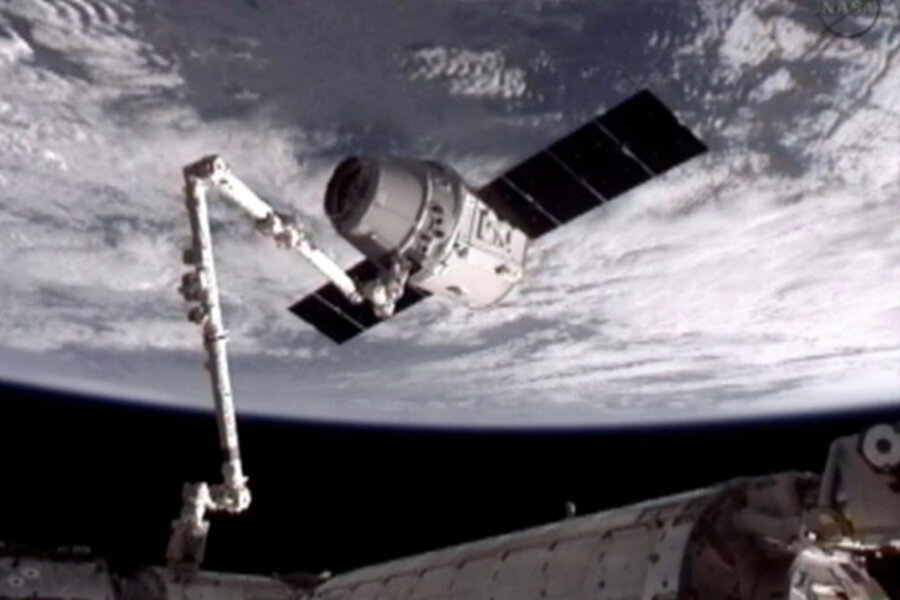SpaceX: Historic space station rendezvous at over 17,000 mph
Loading...
| CAPE CANAVERAL, Florida
The privately funded Dragon capsule arrived at the International Space Station for a historic docking Friday, captured by astronauts wielding a giant robot arm, making the first commercial delivery into the cosmos.
"Looks like we've got us a dragon by the tail," U.S. astronaut Donald Pettit announced.
The gleaming white Dragon was snared after a few hours of extra checks and maneuvers. The two vessels came together while sailing above Australia at 17,500 mph (28,160 kph).
Controllers with the U.S. space agency, NASA, clapped as their counterparts at SpaceX's control center in California — including the company's billionaire maestro, Elon Musk —jumped out of their seats to exchange high fives.
It was the first time a private company has sent a vessel to the space station, an achievement previously reserved for a small, elite group of government agencies. And it's the first U.S. craft to visit the station since NASA's final shuttle flight last July.
SpaceX — officially known as Space Exploration Technologies Corp. — is one of several companies vying for the chance to launch Americans from U.S. soil. For now, NASA astronauts going to the space station must go through Russia, an expensive and embarrassing situation for the U.S. after a half-century of orbital self-sufficiency.
President Barack Obama is pushing commercial ventures in orbit so NASA can concentrate on grander destinations like asteroids and Mars. Once companies master supply runs, they hope to tackle astronaut ferry runs.
Musk, who founded SpaceX a decade ago and helped create PayPal, said he can have astronauts riding his Dragon capsules to orbit in three or four years.
The current, unmanned Dragon capsule is carrying a half-ton of supplies, and it is expected to be released from the space station next Thursday after being filled with science experiments and equipment.
The capsule made a practice fly-by Thursday and returned early Friday so Pettit, along with Dutch astronaut Andre Kuipers could capture it with the robot arm.
NASA ordered extra checks of the Dragon's imaging systems as the capsule drew closer to the space station, putting the operation slightly behind schedule. At one point, SpaceX controllers ordered a retreat because of a problem with on-board tracking sensors.
The space agency insisted on proceeding cautiously. A collision at orbital speed could prove disastrous.
The space station has been relying on Russian, Japanese and European cargo ships for supplies ever since the NASA shuttles retired. None can bring anything of value back; they're simply loaded with trash and burn up in the atmosphere.
The Dragon is designed to safely re-enter the atmosphere, parachuting into the ocean like the Mercury, Gemini and Apollo capsules did back in the 1960s.





